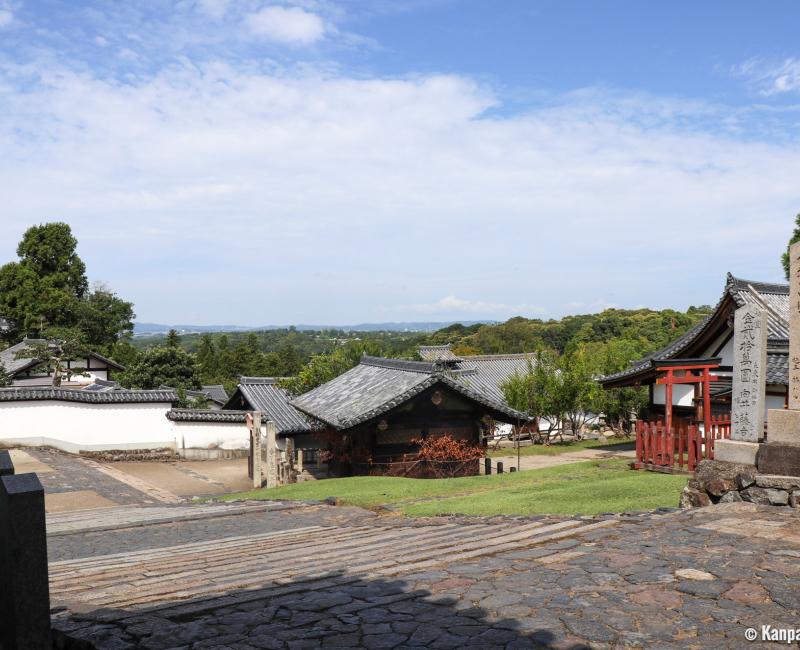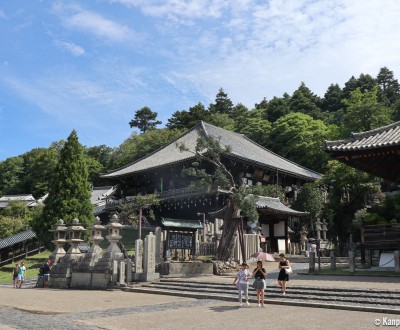Nigatsu-do
Nara’s Stilt Temple
Nigatsu-do is a Buddhist temple attached to the Todai-ji complex, located on the slopes of Wakakusa Mountain, on the eastern part of Nara. Literally "building of the second month," it owes its name to the impressive annual ceremony of fire and water called Omizutori. Moreover, the beautiful panoramic view of the former capital of Japan is worth the climb up to the balcony of the temple’s main building.
Original buildings of the Nigatsu-do complex might date back to the mid-8th century. Totally burnt down in 1667, they were reconstructed identically two years later. Somehow looking like Kiyomizu-dera, the main pavilion on stilts, was designated a National Treasure of Japan. However, it is not for its architecture nor for the contemplation of Kannon’s statues (here qualified as 秘仏 hibutsu, or secret Buddha, meaning they remain hidden from the public’s view) that one goes there, but rather to be away from the classical tourism.
Interesting viewpoint on Nara
The highlight of Nigatsu-do is its view on Nara from the main building’s wooden balcony. Much less frequented than its neighbor Todai-ji, the temple, which is located a little higher in altitude (after several stone stairways), offers an interesting panoramic view of the city center, in a relaxing break while contemplating the landscape and imagining for a time what the former capital may have looked like.
We recommend getting there a little earlier than midday, at the time when the temple’s monks sing a prayer. The view and the worshipers gathering for these monastic songs provide an immediate immersion into an authentic and mystical atmosphere. Before going down through the covered stairs, have some water and tea (hot or iced depending of the season) offered by the temple in its former kitchen converted in rest area. It is common courtesy to wash your glass before leaving.
Nigatsu-do temple lets its doors open in the evening; it also becomes a good spot to admire the setting sun, solely lighted by a few lanterns 🏮.

Omizutori Festival
The second reason why it attracts many Japanese visitors is its traditional ceremony, called Omizutori, occurring from March 1 to 14. This ceremony of monks’ repentance was first introduced by Monk Jichu in 760 in Nara. Celebrated every year without a break, it was first planned in February under the name Shuni-e for "the second month’s celebration." Then, year after year, this peculiar matsuri was nicknamed by inhabitants Omizutori, meaning "taking the sacred water." This name is related to the last main step of the ritual, when monks retrieve water from a hidden well in the temple to offer it to Kannon, the deity of compassion.
Finally, the most popular show occurs each night of the festival around 6:30-7 p.m., when impressive pine torches hooked on the balcony are lighted. The night of March 12 is usually the most attended as the ceremony, usually happening for about 20 minutes, lasts 45 minutes on this day.

